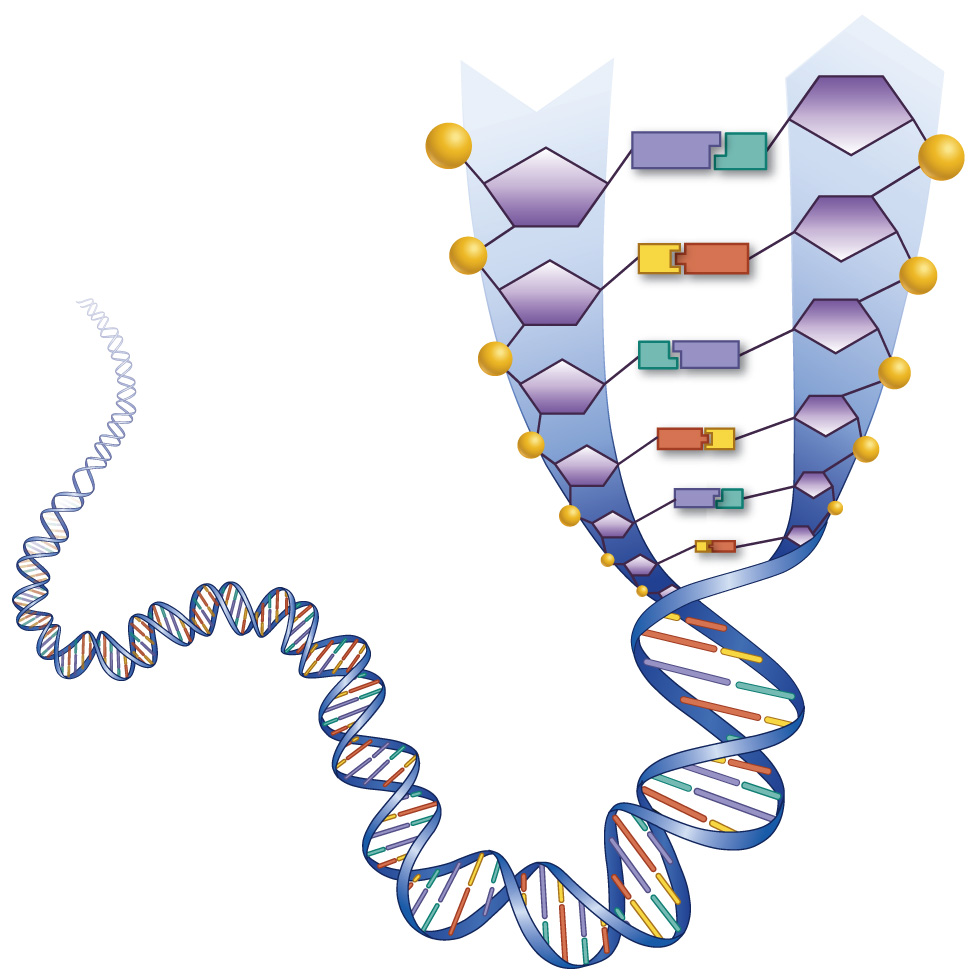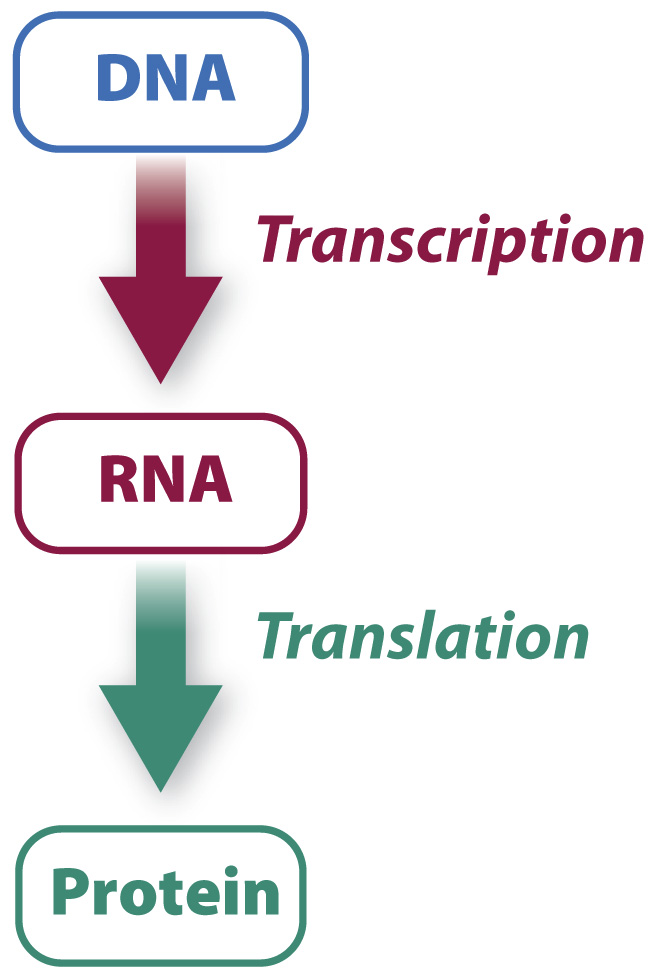Nucleic acids store and transmit information needed for growth, function, and reproduction.

The first essential feature of a cell is its ability to store and transmit information. To accomplish this, cells require a stable archive of information that encodes and helps determine their physical attributes. Just as the construction and maintenance of a house requires a blueprint that defines the walls, plumbing, and electrical wiring, organisms require an accessible and reliable archive of information that helps determine their structure and metabolic activities. Another hallmark of life is the ability to reproduce. To reproduce, cells must be able to copy their archive of information rapidly and accurately. In all organisms, the information archive is a remarkable molecule known as deoxyribonucleic acid, or DNA (Fig. 1.12).
13
DNA is a double-

How does the information stored in DNA direct the synthesis of proteins? First, existing proteins create a copy of the DNA’s information in the form of a closely related molecule called ribonucleic acid, or RNA. The synthesis of RNA from a DNA template is called transcription, a term that describes the copying of information from one form into another. Specialized molecular structures within the cell then “read” the RNA molecule to determine what building blocks to use to create a protein. This process, called translation, converts information stored in the language of nucleic acids to information in the language of proteins.
The pathway from DNA to RNA (specifically to a form of RNA called messenger RNA, or mRNA) to protein is known as the central dogma of molecular biology (Fig. 1.13). The central dogma describes the basic flow of information in a cell and, while there are exceptions, it constitutes a fundamental principle in biology. As proteins are ultimately encoded by DNA, we can define specific stretches or segments of DNA according to the proteins that they encode. This is the simplest definition of a gene: the DNA sequence that corresponds to a specific protein product.
DNA has another remarkable feature. In addition to storing information, it is easily copied, or replicated, allowing genetic information to be passed from cell to cell or from an organism to its progeny. Each organism’s DNA archive can be stably and reliably passed from generation to generation in large part because of its double-
14
Quick Check 3 How does the central dogma help us to understand how mutations in DNA can result in disease?
Quick Check 3 Answer
DNA directs the formation of proteins that do the cell’s work. Mutations in DNA can be transcribed and translated into proteins with altered structure and, therefore, different functions. Changes in protein function can cause the cell to work improperly, or fail altogether, resulting in some cases in disease. In some cases, however, altered proteins improve the function of the cell.